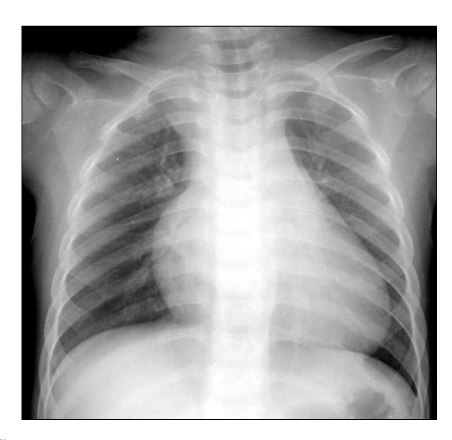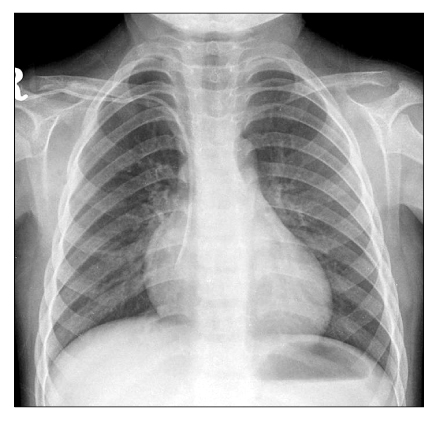Chonnam Med J.
2009 Apr;45(1):66-69. 10.4068/cmj.2009.45.1.66.
Tachycardia-induced Cardiomyopathy Presenting in a Coma: a Case Report
- Affiliations
-
- 1Department of Pediatrics, Chonnam National University Medical School and Research Institute of Medical Sciences, Gwangju, Korea. cardiol@jnu.ac.kr
- KMID: 2172286
- DOI: http://doi.org/10.4068/cmj.2009.45.1.66
Abstract
- Tachycardia-induced cardiomyopathy can be defined as a condition characterized by myocardial dysfunction resulting from atrial or ventricular tachyarrhythmia, without underlying structural heart disease. It is a potentially reversible cause of heart failure and its most common presentation is dilated cardiomyopathy. When patients suffer from dilated cardiomyopathy with tachyarrhythmia, it is extremely important to recognize this potentially reversible condition. Here, we report the successful treatment of persistent supraventricular tachycardia with digoxin and atenolol during the treatment of a patient who presented in a coma.
Keyword
MeSH Terms
Figure
Reference
-
1. Kantoch MJ. Supraventricular tachycardia in children. Indian J Pediatr. 2005. 72:609–619.
Article2. Kannankeril PJ, Fish FA. Allen HD, Driscoll DJ, Shaddy RE, Feltes TF, editors. Disorders of cardiac rhythm and conduction. Moss and Adams' heart disease in infants, children, and adolescents: including the fetus and young adult. 2008. 7th ed. Philadelphia: LWW;294.3. Lowenstein SR, Halperin BD, Reiter MJ. Paroxysmal supraventricular tachycardias. J Emerg Med. 1996. 14:39–51.
Article4. Khasnis A, Jongnarangsin K, Abela G, Veerareddy S, Reddy V, Thakur R. Tachycardia-induced cardiomyopathy: a review of literature. Pacing Clin Electrophysiol. 2005. 28:710–721.
Article5. Ko JK, Kim YH, Park IS, Hong CY. Tachycardia induced cariomyopathy in Childhood. Korean J Pediatr. 1997. 40:55–62.6. Richardson P, McKenna W, Bristow M, Maisch B, Mautner B, O'Connell J, et al. Report of the 1995 World Health Organization-International Society and Federation of Cardiology Task Force on the definition and classification of cardiomyopathies. Circulation. 1996. 93:841–842.
Article7. Lipshultz SE, Sleeper LA, Towbin JA, Lowe AM, Orav EJ, Cox GF, et al. The incidence of pediatric cardiomyopathy in two regions of the United States. N Engl J Med. 2003. 348:1647–1655.
Article8. Tomita M, Ikeguchi S, Kagawa K, Noda T, Nishigaki K, Furuta S, et al. Serial histopathologic myocardial findings in a patient with ectopic atrial tachycardia-induced cardiomyopathy. J Cardiol. 1997. 29:37–42.9. Jovanovic S, Grantham AJ, Tarara JE, Burnett JC Jr, Jovanovic A, Terzic A. Increased number of cardiomyocytes in cross-sections from tachycardia-induced cardiomyopathic hearts. Int J Mol Med. 1999. 3:153–155.
Article10. Ko JY, Chung ES, Kim SH, Lim KA, Huh J, Kang IS, et al. Clinical efficacy of carvedilol in children with dilated cardiomyopathy. J Koeran Pediatr Heart. 2004. 8:412–421.
- Full Text Links
- Actions
-
Cited
- CITED
-
- Close
- Share
- Similar articles
-
- Mid-Ventricular Hypertrophic Obstructive Cardiomyopathy Complicated by an Apical Aneurysm, Presenting as Ventricular Tachycardia
- Successful Treatment of Tachycardia-induced Cardiomyopathy with Radiofrequency Catheter Ablation
- Torsades de Pointes during Treatment of Tachycardia-Induced Cardiomyopathy
- Stress-Induced Cardiomyopathy Presenting as Ventricular Tachycardia
- A Case of Hypertrophic Cardiomyopathy Complicated by Acute Myocardial Infarction and Ventricular Tachycardia: Slow Coronary Artery Flow




